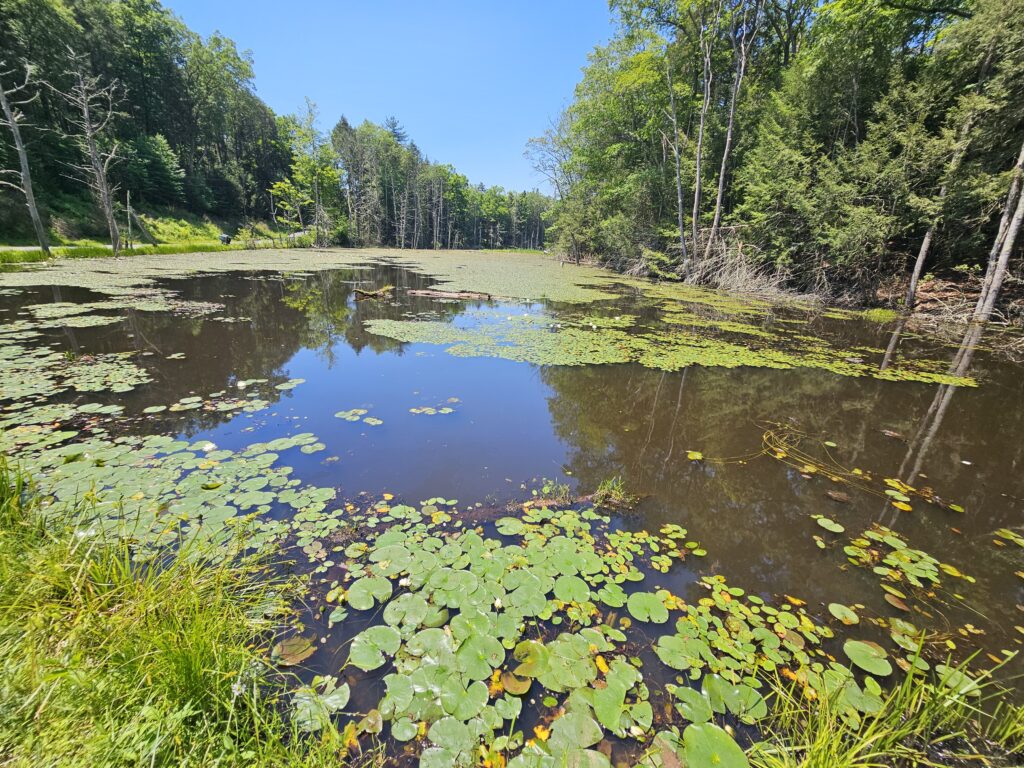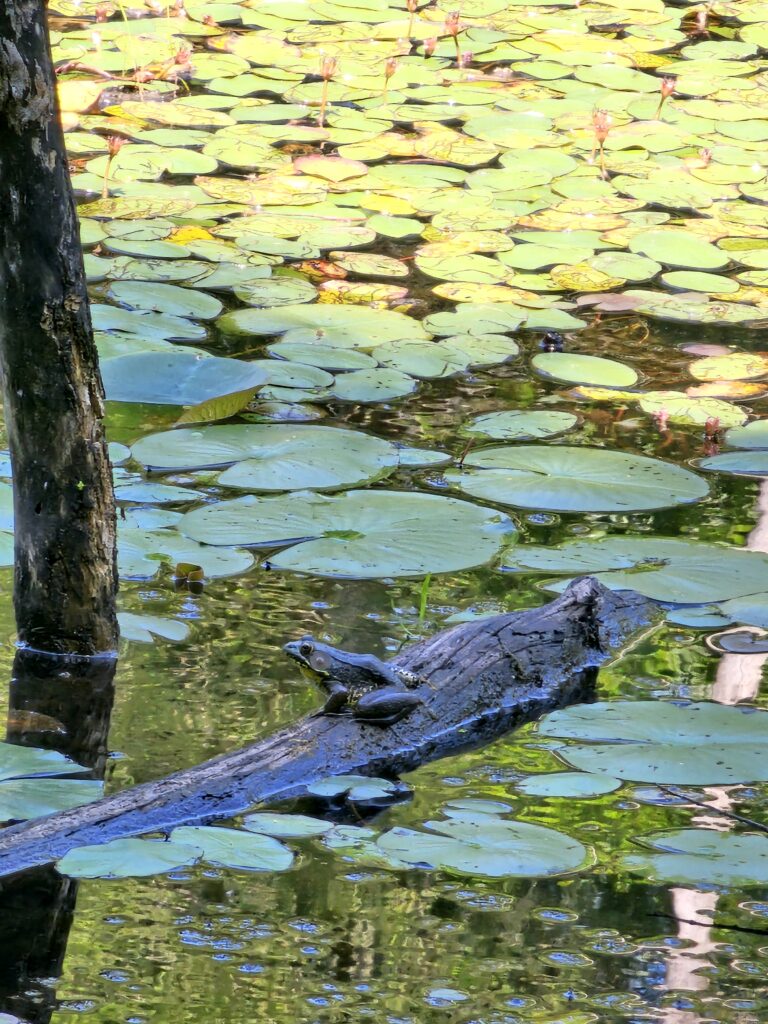Together, the VanHorn and VanHorn Homestead Conservation Easements conserve 148 acres in Lycoming County. Donated to NPC by the same owners in the late 1990s, these easements feature mature woodlands and wetlands adjacent to Big Run, a high-quality native trout stream and tributary of Muncy Creek.
On the VanHorn Homestead, a swamp supports a variety of animals, plants, and aquatic life. One unique aspect is its drainage pattern: it flows both east to Lake Run and west into Big Run!
During her annual visit to these conservation easements, Sara spotted a big, green frog perched on a log in the swamp, among other highlights.
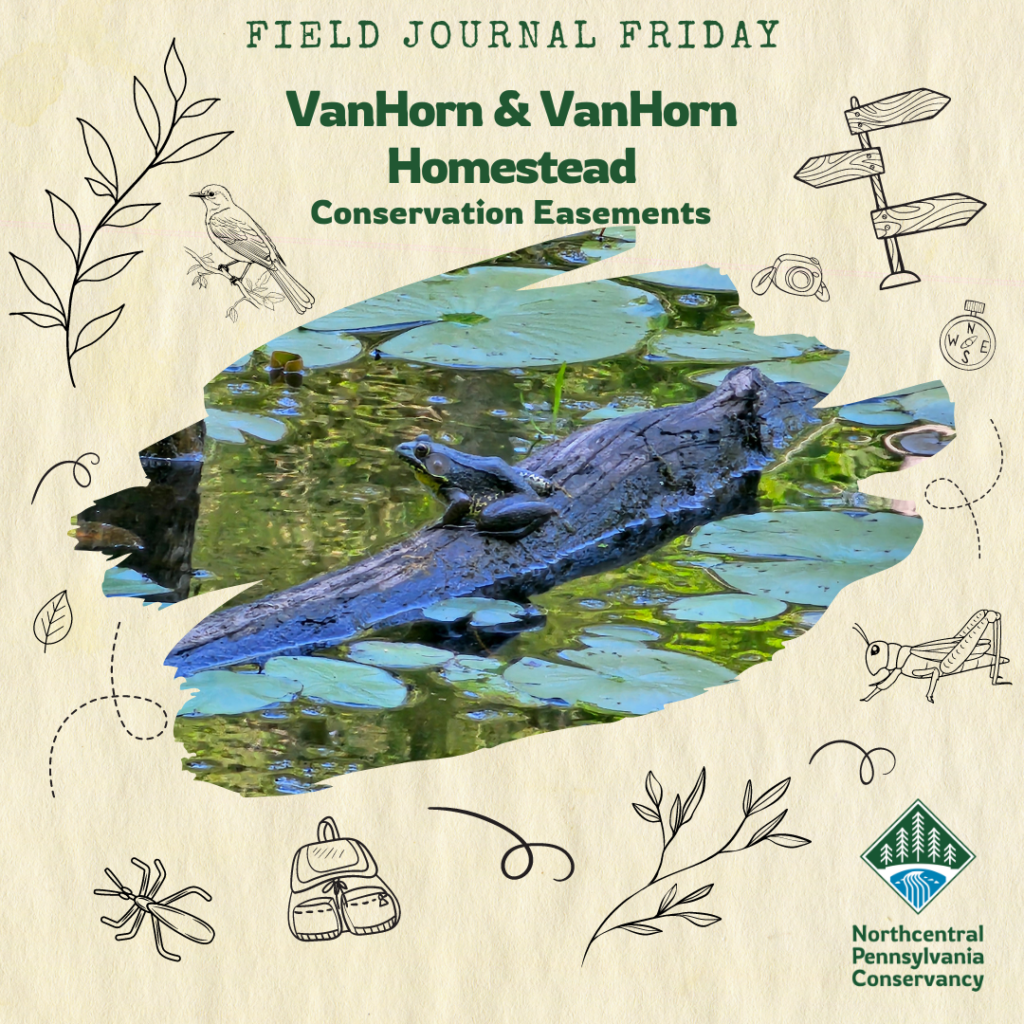
Observation #1: Ghost Pipe
Ghost pipe is a native perennial that is all white and can be found growing in clusters up to 8 inches tall across most of the US. Each stem has a single flower. It’s also known by other names such as Indian pipe, corpse plant, or ghost plant. What makes this plant so unique is that it does not contain chlorophyll! Most plants contain chlorophyll, which converts the sunlight into carbohydrates (energy for the plant), this process is known as photosynthesis. Chlorophyll is also what makes plants green. Lacking chlorophyll, ghost pipes get their carbohydrates and nutrients from tree roots, via their relationship with myccorhizal fungi.
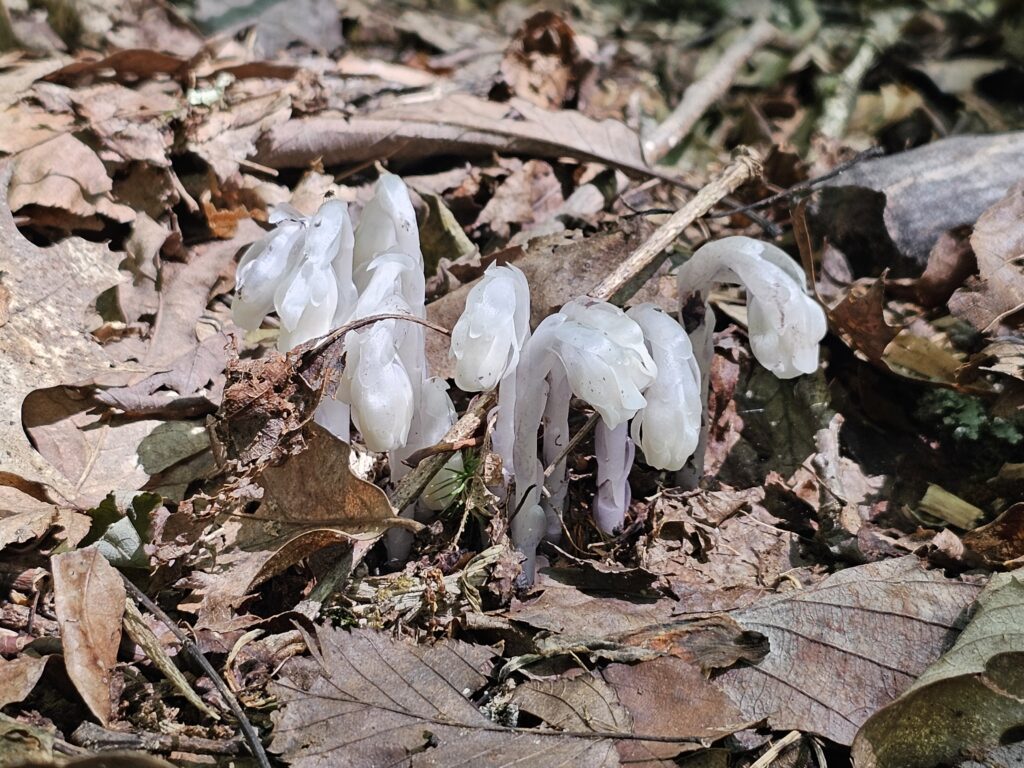
Observation #2: Partridge Berry
Partridge berry is a native, sprawling evergreen vine on the forest floor, found throughout woodlands in the eastern United States. A pair of small, white, fuzzy flowers grow at the end of its creeping stem and produce a single red berry.
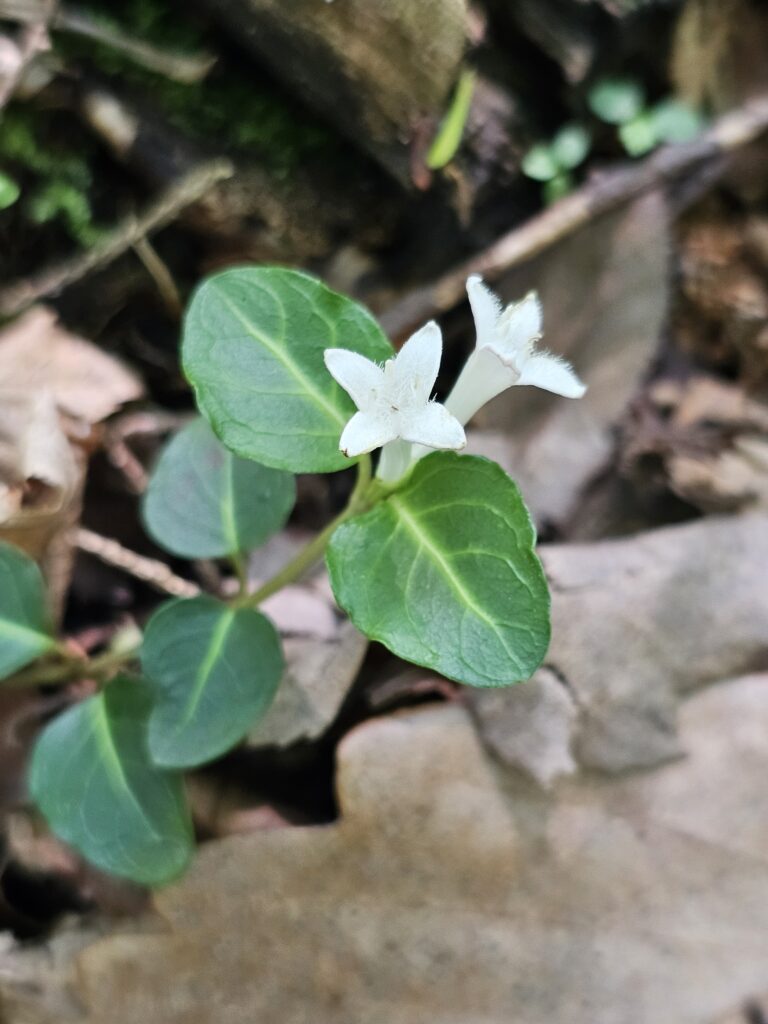
Observation #3: White Water-Lily
White water-lily – also known as fragrant water lily – this native, aquatic floating flower is accompanied by its round leaves, which grow up to 10” across. Rhizomes and roots anchor each plant to the bottom of the ponds where they are found. The fragrant flowers close at night and on cloudy days. Seeds from the flower are a great source of food for birds and other animals. The flower and lily pads provide habitat for aquatic macroinvertebrates and refuge for small fish
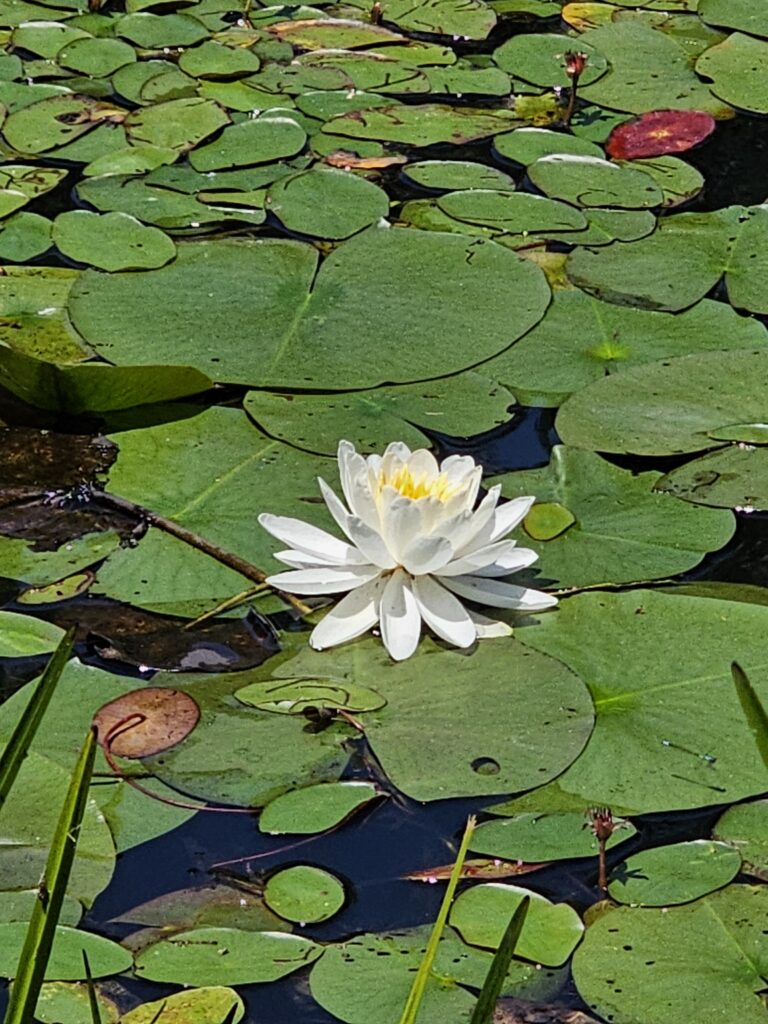
Observation #4: Reishi
Reishi is a large, reddish-brown fungus that grows in a fan-shape from wood, with a lacquered appearance. There are over a dozen species of reishi in the US, all having a very similar appearance. Each species is particular about the trees that they grow from, in the eastern US, they are primarily found growing on eastern hemlock.
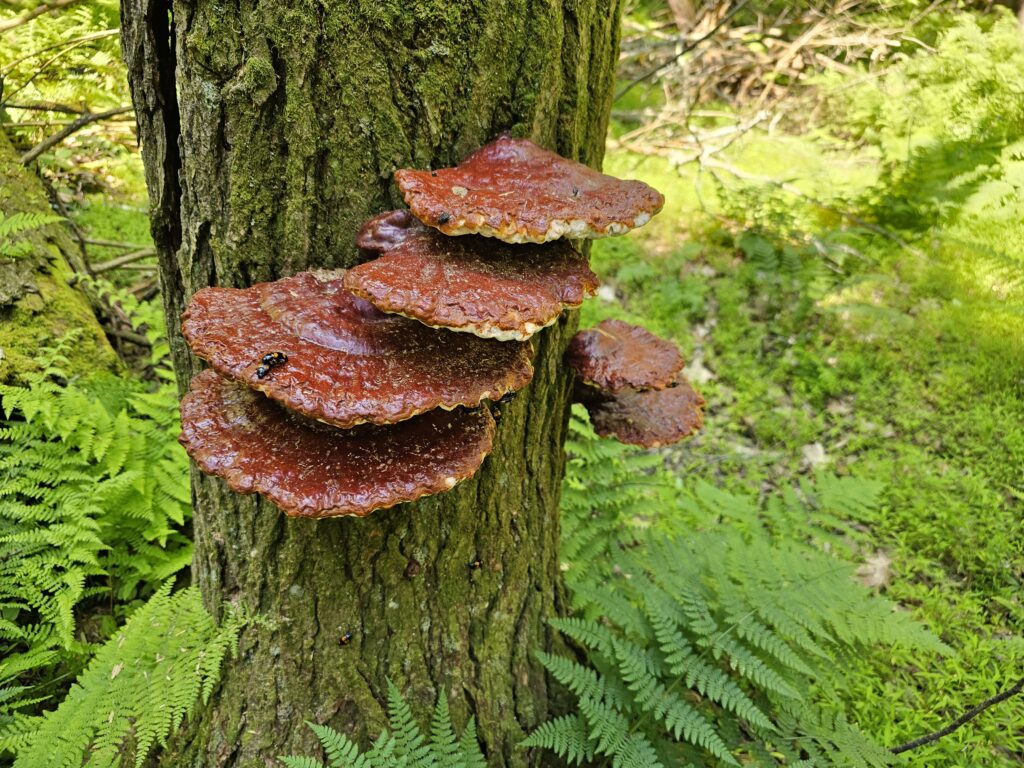
Observation #5: Green Frog
Green frogs can be found living in lakes, ponds, streams and wetlands in every county of Pennsylvania, and throughout the eastern half of the US. Sometimes mistaken for American bullfrog, size can help differentiate the two species, the American bullfrog is the largest true frog species in eastern North America.
